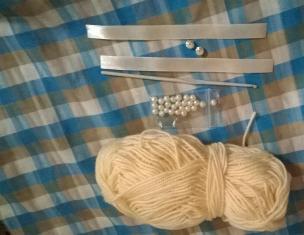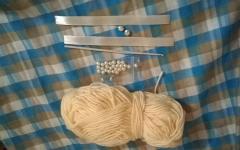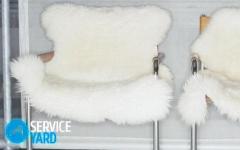Everyone wants to look good. Even those few stern young ladies who resemble Kalugina from the first episode of “Office Romance.” But an attractive, well-groomed appearance is by no means a genetic predisposition, but rather the result of proper care and a healthy lifestyle. How to determine your facial skin type so as not to make a mistake when choosing individual cosmetics? After all, branded products are not cheap, and if used incorrectly, the effect may be zero. So let's get started.
Cosmetology educational program
Main types of facial skin and their characteristics:
Normal
Looks smooth and even. The pores on it are almost invisible. The surface is matte, there are no acne, scars or other defects. On such a face, small wrinkles are almost invisible, the water and fat balance of the skin is not disturbed. Daily care for this type is simple and does not require the use of medicinal cosmetics.
Dry
Very tender, thin, has a gentle blush, which is often a sign. This type of skin is more common in blondes with light eyes than in brown-haired women and brunettes. In hot weather, it loses water very quickly, which leads to rapid dehydration. If a woman does not know how to determine her facial skin type and applies cosmetics incorrectly, the first wrinkles appear on it very quickly.
Cool and windy weather is also unfavorable for moisture-deficient skin. Not protected by anything, it is prone to peeling and the formation of microcracks. Dry skin does not tolerate water treatments using soap and has hypersensitivity to new creams and masks. Inappropriate cosmetics can cause not only burning and itching, but also severe allergies.
Fat
Here the sebaceous glands are too active. Looks like oily skin unhealthy, often grayish. It may shine or become glossy. The pores are clearly enlarged and are prone to the formation of pores, which is why in cosmetology the oily type of skin is often compared to the peel of an orange.
However, there are beneficial benefits to having oily skin. She ages slowly and withstands unfavorable weather changes almost painlessly. Wrinkles on the face become noticeable much later. As a result of incorrectly selected cosmetics, peeling may appear on the face.
Video: Skin types
Combined or mixed
Happens frequently. Has signs of both dry and oily skin. Fatty areas are most often located on the nose, chin and forehead. Dry - around the eyes and on the cheeks.
What do you have?
We've sorted out the main skin types, now let's move on to specifics. How do you know which one you have? And can this be done at home? Can. For the correct result, several conditions must be met:
- Do not determine your skin type between 11 am and 5 pm - the result may be incorrect. At this time of day, metabolic processes in skin tissues are slowed down.
- Give your face a break from makeup for 3-4 hours before taking the test.
There are several ways to examine your skin at home, the simplest of which is visual.

We arm ourselves with a magnifying glass
To visually test to determine your skin type, go to the mirror and look at your face through a magnifying glass. Remember what we wrote about above: see if the pores on your face are enlarged, if there are comedones and rashes, peeling, pay attention to the shade. Carry out the test in good lighting. Pay special attention to the T-zone, i.e. the area of the nose and forehead. After all, it is in this area that the skin is most often oily.
Napkins to the rescue
A test for facial skin type is easy to carry out using simple thin paper or a cosmetic handkerchief, not moistened with anything. It should be carried out several hours after hygienic washing without the use of cosmetics.
- Lie down on the sofa.
- Apply a cosmetic tissue or paper to your face. Press it lightly with your palms so that the paper covers the skin surface well.
- Wait 10 minutes and evaluate the result.
The areas of the napkin where there are intense marks are areas of oily skin. Do not think that the napkin will feel oily to the touch, it is not. Spots indicating increased secretion of sebum resemble wet spots.
If the napkin is completely dry, then your skin simply needs intense hydration.
But most often, areas of the napkin vary: somewhere there are intense stains, somewhere not so much, and somewhere the paper remains dry. Hence the conclusion: you are the owner of a combination skin type, like many women.
Video: How to determine facial skin type
How cosmetologists do it
Cosmetic clinics often employ experienced specialists, for whom it is enough to use a visual test to determine your skin type. If a cosmetologist encounters difficulties, he carries out detailed diagnostics using a special device - a dermatoscope.
Additional problems
For cosmetologists, classification by type is not limited to the conclusions of the 4 varieties that we indicated above. They also distinguish additional skin types:
- Mature. Folds, small and large wrinkles, and other changes characteristic of age are clearly visible - swelling under the eyes, ptosis.
- Problematic. Irritation, rashes, and acne often occur.
- Cooperose. The pattern of capillaries is enhanced. Couperosis is characterized by a red, sometimes bluish tint.
- Sensitive. Reacts with inflammation to any external irritants.
A doctor can best tell you how to properly use cosmetics for pathologically altered skin. Amateur action in this area is undesirable - it can aggravate existing problems. For example, women with rosacea should not visit the bathhouse and sauna, use belongings, etc. But few people know about this, because they never reached a professional cosmetologist.
What do skin problems indicate?
The beauty and appearance of your facial skin directly depends on your health. Therefore, careful care cannot be an isolated event. Skin problems most often result from:
- Anemia
- Various metabolic diseases
- Skin diseases
- Wrong diet
- Prolonged exposure to stress
- Chronic pathologies of the cardiovascular and urinary systems.
The list is far from complete. More precisely, you will learn about it after a detailed examination. And the reason for visiting the clinic may be your useless efforts for daily facial care. After all, in case of chronic pathologies, no expensive creams will be effective.
Before using any cosmetic product, first understand your skin type. If you find it difficult, visit a cosmetology clinic. Not an office, but a clinic.
Get into the habit of leading healthy image life. No matter how trivial it may sound, this is the basis of not only excellent well-being, but also a beautiful appearance.
“I bought an expensive cream, but it didn’t suit me.” “In winter, I seem to use the same foam, but after washing my face, my face suddenly starts to burn.” All these cases show how important it is to know the type and “habits” of your skin. Just like we know “our” shoe size, clothing size and bra marking.
Each person's skin is individual: it differs in structure, metabolic rate, sensitivity to irritants. Accordingly, our skin looks different and needs different care products.
There are 4 main types of healthy skin:
- Dry
- Normal
- Mixed
- Fat
What skin type do I have?
Sometimes this is not so easy to determine. Read the descriptions carefully, and then arm yourself with a mirror, a cosmetic napkin and test questions and try to determine your skin type yourself.
Dry skin: take care from a young age
Dry skin is thin, delicate, and almost never shines or shines. It produces little sebum. the pores are narrow and almost invisible. After washing with soap, an unpleasant feeling of “tightness” appears, the face itches and flakes. Dry skin is not prone to acne and rashes, but it becomes chapped easily. In response to external irritants, red spots, dry “scales,” and microcracks appear on it. This skin may look great when young, but without care it is prone to early wrinkles and premature aging.
Some women have dry skin since their youth. For others, it “dries up” for various reasons:
- with age,
- due to lifestyle
- from stress or climate change,
- under the influence of sun, wind, hard water,
- due to disturbances in general metabolism.
In any case, dry skin has a disturbed water balance: it loses more moisture than it receives. And this must be corrected with proper care:
- Choose soft cleansers: milk or gel
- enjoy day creams, forming a thin protective layer on the skin
- Apply cosmetic oils and nutrient-rich creams
Normal skin: cherish your dreams
Normal skin– smooth, elastic and fresh. Every girl's dream, she shines with an even, healthy color. It has a good water and fat balance, so it does not become shiny with fat and does not “dry out”. Such skin normally tolerates washing with foam and soft water at room temperature. The face remains fresh until the evening. True, small pores may be visible on the nose and chin, and shiny areas or pustules may appear before menstruation.
The “ideal balance” of normal skin is sometimes disrupted. In winter, it can become drier, and in summer, when the secretion of the sebaceous glands increases in the heat, oily areas appear on the face. In addition, over the years, normal skin slowly turns into dry skin.
- Choose gentle cleansers
- Use light, non-greasy moisturizers
- Once a week you can do deep cleaning with a scrub
Mixed skin: you need your own approach
This is the most common skin type. Combination or mixed skin simultaneously has oily and normal or even dry areas.
Typically, the skin on the nose, forehead and chin is oilier. These areas are called the T-zone. Pustules often form on them, enlarged pores and blackheads are visible, and within an hour after washing the skin becomes shiny.
At the same time, the skin on the temples and cheeks may be normal (smooth, matte) or even slightly dry. However, oily and dry areas of the skin can be located differently.
They care for mixed skin, depending on the time of year and its condition, as oily or normal. Separate care helps to level out the condition of different areas. The simplest option: cleanse the skin with universal milk or cleansing foam, and then treat oily areas with a drying toner, and apply moisturizer to dry areas.
Oily skin will not age soon
Oily skin is a headache for its owners. The pores of such skin are usually enlarged, and the sebaceous glands secrete an increased amount of sebum. Therefore, the face almost always shines, and if you touch the skin with a napkin, you will see greasy marks. Fat clogs pores, allowing pathogenic microbes to accumulate and multiply. As a result, inflammation, acne, and ulcers often appear on the skin.
This type of skin requires especially careful care. It needs to be carefully dried with cosmetics, but it is important not to overdry it. Oily skin can simultaneously suffer from dehydration, and its owners do not even understand the reasons for their unpleasant sensations.
To care for oily skin use:
- Cleansing foams, with fruit acids, extracts of chamomile, celandine, etc.
- Lotions for deep cleansing, with anti-acne effect (against rashes)
- Drying tonics
- Light moisturizing creams
- Intensive cleansing masks.
Important: creams, scrubs and masks are not applied to skin with rashes, ulcers, or inflammation. If acne and inflammation appear, it is better to consult a cosmetologist.
And the good news is that oily skin tends to age more slowly. Wrinkles form on it later: excess sebum forms a reliable “protective layer” and protects it from drying out. At good care Over the years, such skin becomes normal and pleases with its freshness for a long time.
Test yourself
If you cannot immediately determine your skin type, a small test will help you. You will need good lighting, a mirror, and cosmetic wipes.
Wash your face or use cosmetic milk. Look carefully at your face in the mirror.
After 2 hours, repeat the inspection and choose your answers to 6 questions
- You look in the mirror. Pores of your skin:
- Almost invisible
- Small, but still visible
- Extended in the area of the nose, forehead
- Large
- No greasy marks
- Light prints, almost indistinguishable
- There are prints left from the nose, chin, forehead
- Clear fingerprints from every touch
- The skin tightens and there is a feeling of dryness
- The face is smooth, there are no unpleasant sensations
- In some areas the skin is smooth, in others it is flaky
- Pleasant feeling of freshness
- Tight, slightly itchy
- Fresh, clean
- Shiny on the forehead, and (or) nose, chin
- Oily in almost all areas of the face
- Never
- Very rarely, usually once a month
- Sometimes on the forehead, nose, chin
- Often
- The skin becomes very dry, chapped and flaky in winter.
- The skin tolerates heat and cold equally, it becomes a little drier in winter
- Skin becomes oilier in summer than in winter
- The skin tolerates winter well, but in summer pimples and blackheads appear much more often.
Count which answers you got more:
A – dry skin
B – normal skin
C – mixed skin
D – oily skin
|
1. How would you characterize the condition of your skin after washing? |
|
|
a) Feeling of comfort and cleanliness |
1 point |
|
b) A feeling of “tightness” mainly in the cheek area |
2 points |
|
c) Very rarely there is a feeling of “tightness” |
3 points |
|
d) Feeling of “tightness”, dry skin all over the face |
4 points |
|
|
|
|
2. How pronounced are the pores on your face? |
|
|
a) Well visible over the entire surface of the face, expanded |
1 point |
|
b) Pores are more noticeable in the T-zone (forehead, nose, chin) |
2 points |
|
c) Small |
3 points |
|
d) Almost invisible |
4 points |
|
|
|
|
3. How often do pimples and blackheads appear on your face? |
|
|
a) Quite often |
1 point |
|
b) Most often in the T-zone area |
2 points |
|
c) As a rule, once a month |
3 points |
|
d) Almost never |
4 points |
|
|
|
|
4. Is your skin prone to flaking? |
|
|
a) Almost never |
1 point |
|
b) Sometimes on the cheeks |
2 points |
|
c) From time to time |
3 points |
|
d) Often |
4 points |
|
|
|
|
5. What does your skin look like by noon? |
|
|
a) Oily shine over the entire surface of the face |
1 point |
|
b) Oily shine in the nose and forehead area |
2 points |
|
c) Neither dry nor oily |
3 points |
|
d) Matte, never shiny |
4 points |
|
|
|
|
6. Does the condition of your skin change depending on the time of year? |
|
|
a) The skin always seems oily; pimples and blackheads occur more often in the summer |
1 point |
|
b) Skin is oilier in summer than in winter |
2 points |
|
c) The skin tolerates heat and cold well |
3 points |
|
d) The skin is sensitive to changes in weather, especially cold |
4 points |
Determine your skin type:
6-9 points - Oily and/or problematic
10-16 points - Combined (mixed)
17-18 points - Normal
19-24 points - Dry and/or sensitive
Each type has its own characteristics and requires special care products.
Dry skin
It has small pores and a matte (dull) tint, and is characterized by a low fat content. It is sensitive and thin, easily peels and is prone to irritation. Wrinkles quickly appear on it, especially around the eyes, because... the skin loses its elasticity. The advantage of this skin type is that pimples and blackheads rarely appear on it. Dry skin is more common in women living in hot, dry or cold, dry climates. The pH level for dry skin ranges from 3 to 5.5.
Sensitive skin
As a result of the stress experienced, red spots, acne and pimples may appear on the face. Such skin is prone to allergies from exposure to it sun rays and cosmetics.
Normal skin
This type of skin looks healthy. The moisture and fat content in it is balanced. Irritation occurs infrequently. At proper care For this type of skin, wrinkles do not appear until old age. The pH level of normal skin is 5.5.
Combination skin
The skin looks healthy, with an even texture and oily areas, large pores in the T-zone, which runs through the forehead, nose and chin. There may be areas of dryness on the cheeks, eye area and temples. Possible uneven coloration of the skin. With proper care, wrinkles do not appear for a long time. The pH level for combination skin is different. It can range from 3 (on dry areas) to 6 (on oily areas).
Oily skin
This skin type has increased secretion of the sebaceous glands. It has a characteristic oily sheen and very noticeable large pores. Dust and dirt literally stick to it. And, as a result, this type is characterized by various rashes and pimples. Oily skin is not prone to wrinkles - excess sebum prevents it from drying out. The pH level can reach 6.
How to determine your facial skin type? Test to determine skin type
Dry and normal, combination, oily. If you say a combination of these words, every woman of any age will unmistakably say that we are talking about the type of skin of the face, body and head.
If you continue the short awareness test and ask the question “What type of facial skin do you have,” then not every woman will answer this question with confidence. And this is a paradox! After all, every representative of the fair sex uses cosmetic skin care products. At the same time! Each product, without exception, is intended for a specific skin type of the face, body and head.
Although no... there are some tonics, lotions and a number of other products that are suitable for any skin type. But, as a rule, they are intended for hygienic procedures. Everything that helps our skin maintain freshness and youth should be used strictly for a specific type.
As the wise proverb says “It’s not a shame not to know something, it’s a shame not to want to know” and fill the knowledge gap.
There are several ways to determine your facial skin type. We recommend choosing a couple of them and, if the results are the same, then you will have an answer to the question about your skin type, and you will join the squad of “experts”.
Set aside a free day or half of it for testing. Remove your makeup and wait a couple of hours without the cosmetic products you usually use.
Test 1 – visual diagnosis of skin type.
In order to determine your skin type visually, you will need available funds: natural lighting, good mood and skin rested from the cream, as well as a magnifying glass. Carefully examine the entire surface of the face in a magnifying mirror in natural light. Don't miss a thing: no blackheads, no open pores, pimples, wrinkles and special attention Pay attention to the location and intensity of oily shine, even if it occurs only in certain areas of the face. Now conduct a comparative analysis of skin types with what you have found in yourself and... the diagnosis is ready upon visual examination.
We suggest where the difficulty arose at this stage.
You need a description of skin types here and now.
Cosmetologists distinguish several types of skin: normal, moisturized or dehydrated, oily, moisturized or dehydrated, sebostatic and atrophied. It is obvious from the names themselves that skin type is assessed by its fat and moisture content. We suggest using more common names.
Type - NORMAL skin.
This is skin with a matte tint, no oily sheen, elastic and smooth. Sounds like the picture. This is true. Such skin creates a healthy look and every woman dreams of it. The skin contains a sufficient amount of moisture. But normal skin type is rare. And not everything is so rosy. Over the years, it becomes dry and the likelihood of wrinkles and micro cracks appearing is very high. Like any other, normal skin requires care to prevent it from fading.
Type – OILY skin.
This is skin that has shine, enlarged pores, and often blackheads and pimples. It has an unattractive grayish tint. However, such skin later shows age-related changes in the form of wrinkles, and it retains its elasticity longer. Requires attention when cleansing. It must be carried out more carefully with the help of foams and masks. More demanding on diet (restrictions on spicy, fatty and sweet foods). She benefits from vegetable and fermented milk foods and fruits.
Type – DRY skin.
The skin is thin, matte shade and very tender. Particularly sensitive to irritants: wind, frost. After washing, it may peel off and a feeling of tightness appears. This type is prone to rapid fading, but acne rarely appears.
Type – COMBINED leather.
Its second name is often found - “mixed type”.
It is this type that occurs most often and is characterized by the fact that in certain places (chin, nose or wings of the nose, forehead) it has an oily sheen, and on the cheeks the skin is dry. This type should be treated with increased attention.
Now back to the visual inspection, and you have the information to determine exactly your skin type.
Test 2 - on a cosmetic napkin.
Please note: the napkin must be cosmetic, not just paper. You can buy special wipes to determine your skin type.
You need to start in the same way as with a visual inspection. Let us remind you:
remove your makeup and wait a couple or three hours without the cosmetics you usually use.
Place the napkin on your face. The intensity of the stains on the napkin indicates the following: greasy stains on almost the entire surface of the face - you have oily skin.
If there are no spots in the area of the forehead, chin and nose (the so-called T zone) and in the cheek area, you have a combined type.
But if there are no spots, then you have dry skin, if the fat spots are insignificant, then it is normal. With the normal type, fatty spots may be on the forehead and nose.
See, everything is very simple. Of course, the most correct way is to go to a cosmetologist, but if this is not possible for various reasons, use our advice.
To be confident in your results, we recommend taking one of the many tests containing questions like:
Do you have acne?
What kind of pores do you have (enlarged or not)
How the skin reacts to washing (tightens or not) and so on.
Such a characteristic as skin tone is very important. To understand whether it is worth contacting a cosmetologist specifically to improve tone, you need to squeeze the skin on the side of your face with your index and middle fingers. If a fold forms easily and lasts longer, the more reason there is to worry about the state of skin tone; it becomes flabby.
Our skin is an organ of the body with important and complex functions. It is in constant interaction with the environment, it is exposed to the processes that occur inside our body. Skin type can change with age, depending on the time of year and place of residence. It is for these reasons that you need to systematically control your skin type and use facial skin care methods in accordance with its type for a given period of time.
Tests to determine facial skin type, age and condition
January 29th, 2013 BatelSPb
Coco Chanel
« Every woman has the age she deserves»
Coco Chanel
I have already posted many articles on my blog on how to choose the right cosmetics, how to care for facial skin how to compose recipe for beauty and youth.
But in order to correctly compose recipe for beauty and youth, we need to learn how to correctly determine the type of facial skin, its condition and age.
It is knowledge of the basics of cosmetology that will allow us to preserve youth and beauty. I already wrote about this in the previous ARTICLE.
Today is an important topic. I will give several tests that will allow you to fairly accurately determine your facial skin type, its age and condition.
Determination of skin type and age
Test to help determine skin type
Purpose of testing: to determine the amount of sebum produced
Carrying out such a test means choosing the right skin care products
What is needed to carry out the procedure?
Cleanser
Paper napkin
Clean your face thoroughly and after 3 hours, apply a napkin, pressing it firmly to the surface of the skin;
Carefully remove the napkin and check for grease stains
The napkin remains completely dry, which means you have dry skin;
The napkin was significantly saturated with sebum. This means your skin is oily.
Traces of grease stains are barely visible on the napkin. Normal facial skin.
The area of the napkin in contact with the forehead, nose and chin is oily, and the area of the napkin in contact with the cheeks is dry. With this result, the skin is considered combination.
Test to help determine skin tone
Purpose of testing:
Determine the age of the skin, which does not always coincide with the biological age of a person
Taking into account the age of the skin, it is correct to recommend cosmetics
With two fingers right hand form a fold on clean, dry skin on the side of your face.
Test results:
It is very difficult to form a skin fold - excellent tone. The skin is young.
It is possible to form a fold, but it straightens out immediately - good tone. However, the skin is slightly loose. These are the first signs of middle-aged skin.
The fold can be formed quite easily, and it continues to hold for a couple of seconds. This is bad tone. Flabbiness is a sign of mature skin.
Test to help determine skin elasticity
A rotational compression test will help to definitively determine the age and vital activity of the skin.
Knowing how elastic the skin is, we can draw conclusions about its youth. The more elastic the skin, the younger it is!
Attach thumb to the middle part of a clean, dry face
By pressing lightly, do Roundabout Circulation without lifting your finger from the surface of the skin
The skin resists rotation and pressure - elastic, youthful skin;
A fan of wrinkles appears. Middle aged skin;
Circular movement occurs freely, and when pressed it forms small wrinkles - we are talking about mature skin.
Test - survey to determine skin type
Questions and answer options for owners dry skin type:
Are pores visible on the skin?
No, the skin is very smooth
Does the skin appear matte, even slightly rough?
More likely yes than no
Is your skin color more of a rose-red color?
No, rather pale
If you are 25, have the first wrinkles (crow's feet) appeared in your eyes?
Yes. Already quite noticeable
Does the skin react to cold, wind, sun with redness and irritation?
Yes. Constantly
Can you call your skin acne?
No, there is no inflammation
Do you know the feeling of tightness after washing your face?
Yes, familiar. I can't do without cream.
Does the skin on your cheeks and temples look relatively smooth and thin compared to the skin in your T-zone?
Yes, the skin is different
Does the middle of the face (nose, chin, forehead) have large pores and frequent acne (blackheads)?
Yes, you have to disguise them
Does it shine just an hour after washing?
Yes, the skin quickly becomes shiny
IN winter time Is your skin on your forehead and cheeks prone to irritation and roughness?
More likely no than yes
Does it seem to you that your skin is oilier in summer than at other times?
Yes, a little fatter
Do you have clearly visible acne on your skin?
Does your complexion have a reddish tint?
Does your skin look porous and loose?
More like yes, it looks like lemon peel
Do comedones appear on your face?
Constantly
Do inflammations often occur?
Yes, often
Can you call your skin thick and dense?
Yes you can
Is your skin susceptible to irritation as a result of exposure to cold or exposure to the sun?
Does redness occur often?
Yes, often
Will you experience a feeling of tightness?
Constantly
Is there any peeling?
Yes, it happens
Does your skin react negatively to cosmetic products?
I find it difficult to find suitable cosmetics
Dear subscribers! We invite you to the community http://vk.com/club52868198 for the purchase of professional cosmetics from Israel (Holy Land, Anna Lotan, Renew, GiGi, Christina , OnMacabim, Kart). You have a unique opportunity to purchase famous, elite cosmetics in Russia at Israeli prices. You will find a large selection natural cosmetics leading Israeli manufacturers. All cosmetics are made according to unique and the latest technologies with added minerals, mud and Dead Sea salt.
Why should you buy Dead Sea mineral cosmetics? http://vk.com/club52868198?
Direct cooperation with manufacturers makes it possible to receive cosmetics directly without intermediaries;
There is no chance of receiving a fake or counterfeit product;
The shelf life of cosmetics is always almost maximum;
Storage conditions for cosmetics are observed exactly as specified by the manufacturer.
Orders are delivered to all countries;
Delivery provided by the community;
Constant promotions and discounts make it possible to profitably buy Dead Sea cosmetics.
All products presented on the site have quality certificates according to European and American standards.
The uniqueness of Dead Sea mineral cosmetics is that all the components included in the recipe are natural. The combination of minerals, dirt, salt and other natural ingredients enhances the healing effect and does not give side effects.
To have a healthy, young and beautiful skin, you need to take proper care of it. After all, every day she is exposed to negative environmental factors. After which wrinkles, acne, comedones may appear on it early, the face will become less elastic, elastic, clean, metabolism in the cells will be disrupted, oxygen will stop flowing into the cells, and so on.
Therefore, we need to determine our skin type. Each type has its own care.
You can determine your facial skin type at home using a test or by visiting a cosmetologist. For this, the cosmetologist uses a special device. He can also advise on how to properly care for your face.
There are 4 types of facial skin types: dry, oily, combination, normal. Properly protect it from frost, heat, ultraviolet radiation, bleach and other factors and you will see how it changes for the better every day.
Main types
There are 4 main types of facial skin:
- Normal.
- Dry.
- Fat.
- Combined.
Normal skin
Very rare. Those who have it are the lucky ones because it has the least amount of trouble.
Its features:
- matte
- small pores, they are barely noticeable
- There may be a slight shine in the T-zone (forehead, nose, chin)
- normal sebum secretion
- V at a young age she doesn't bother
- if you take proper care, it will age slowly
- characterized by the absence of flaking, tightness, excessive sebum secretion, no oily shine on the face
- resilient, elastic
- has a pink tint (since it has normal blood circulation in the cells, enough moisture and oxygen)
- no blackheads, not prone to rashes
This type is easy to care for. And it is necessary to take care so that the skin remains young, healthy, firm, elastic, and without wrinkles longer.
Dry skin
You won't have many problems with it, because it looks so soft and matte, but it has its drawbacks.
Characteristics of dry type
- does not have a greasy sheen
- matte, thin
- low sebum secretion
- peeling and tightness may appear
- earlier aging. After 25 years, wrinkles begin to appear
- prone to irritation
At a young age, the skin hardly bothers you, but it is prone to early aging, so after 25 years, wrinkles may already appear.
The dry type does not tolerate soap, and after using it the skin may become even drier. Therefore, you need to wash your face with special products.
It also reacts poorly to temperature changes.
Oily skin
She is the most problematic and really needs correct selection facial care cosmetics and its constant use.
But she has one big advantage - she ages slowly, she is not in danger of early wrinkles.
Characteristic
- enlarged pores
- the skin is thick
- excessive sebum production
- oily shine on face
- prone to the appearance of acne, pimples, blackheads (comedones)
- especially at a young age, it causes a lot of problems to its owner
- More inflammation may appear before menstruation
- permanent use foundation, powder leads to clogged pores and inflammatory process
Oily skin can be caused not only by genetics, but also by poor nutrition, stress, vitamin deficiency, diseases gastrointestinal tract.
Combination skin
Very common. It combines oily, dry or normal.
Specifications:
- The T-zone has enlarged pores, while in other areas they are almost invisible
- increased sebum production only in the T-zone
- Acne and comedones (blackheads) may appear.
- although this type causes problems at a young age, early wrinkles will not appear on the face, and there will be no premature aging
Type determination test
If you have read the characteristics of each type and are still not sure which one you have, then take the identification test:
- Wash your face with cleansing gel.
- Dry your face with a towel.
- Under no circumstances apply any cosmetics to your face.
- Wait 2 hours, then take dry cosmetics and place on your face, lightly press it to your face, remove after 5-10 minutes.
Look at the napkin and if:
- a lot of oily spots (in the cheeks and T-zone) - this is oily skin
- no stains at all - dry
- barely noticeable greasy spots - normal
- oily spots only on the T-zone, but no spots on the cheeks - combination
Skin type cannot be changed. The one you were born with will remain the same for the rest of your life. But after 30 years, her condition changes a little. With age, sebum is secreted less and the skin becomes drier.
Additional problems
In addition to 4 types, the following problems can be distinguished:
- sensitive skin
- fading
- problematic
- rosacea
Fading
Peculiarities:
- you can see wrinkles and folds on the face
- loose skin
- under the eyes - swelling
- there may be pigment spots
Problematic
On the face there is acne, pimples, comedones (blackheads), inflammation, excessive secretion of subcutaneous fat.Most often, oily skin is the problem.
Cooperose
You can see capillaries, and the skin also has a characteristic red or even bluish tint.
Those with this problem should not visit the sauna, bathhouse, or use scrubs.
Sensitive
Peculiarities:
- inflammation and irritation on the face
- peeling and dryness
- redness
- After a mosquito bite, swollen spots remain
- sometimes capillaries appear on the face
- after an abrasion, scratch, or wound, a swollen pink spot remains
If you have very sensitive skin, then be sure to check all cosmetic products (masks, creams, tonics and others) for allergies and intolerances. To do this, test on your wrist. Apply the product for 30 minutes and watch the reaction. If there is no itching, burning or redness, then you can use it.
Causes of skin problems
Problems on the face can appear due to health problems. Such problems could be:
- anemia
- poor nutrition
- stress
- metabolic problems
- chronic diseases of the biliary tract, urinary system
- diseases of the gastrointestinal tract and so on
Therefore, except home care, you need to get examined and understand that perhaps you have skin problems due to some disease. It will be doubly effective to treat your body internally and take care of your skin externally. This is the only way to achieve a good result.
Facial care rules
It is necessary to take care of your skin regularly. Each type has its own principles of care.
Main stages:
- cleansing - 2 times a day (morning and evening) you need to wash your face with gel or foam for washing
- toning - wipe your face with tonic and lotion after washing, also in the morning and evening
- moisturizing - use cream to moisturize your face. Apply it to the face and neck along massage lines
Best regards, Irina Pelekh!
This test was developed by Leslie Baumann, an American dermatologist and researcher, author of the book “Cosmetic Dermatology. Principles and Practice,” which was published in four languages and became a worldwide bestseller.
The test consists of 4 parts, in each of which you determine your skin type according to various criteria:
- O/D (Olily/Dry) - Dry/Oily
- S/R (Sensitive/Resistant) - Sensitive/Resistant
- P/N (Pigmented/Non-pigmented) - Pigmented/Non-pigmented
- W/T (Wrinkled/Tight) - Wrinkled/Smooth
After passing each part of the test, you will receive one of the letters characterizing one or another “parameter” of your skin. The result will be a combination of 4 letters, which will determine the type of skin, for example: DRPT - oily, stable, pigmented, smooth.
Knowing in such detail all the advantages and disadvantages of your skin, you will be able to most correctly select the appropriate means and methods of caring for it, both independently and provide more detailed data to a cosmetologist so that he can better select the necessary therapy method. So, let's get to the first part.
Part 1. O/D (Olily/Dry) - Dry/Oily
In the first part, we will determine the degree of skin hydration, which is affected by the body's production of sebum. The test will allow you to determine with a high degree of accuracy whether your skin is dry or oily. It is recommended not to skip this part of the test, because even if you know your skin type, you can be wrong, which is confirmed by research.









